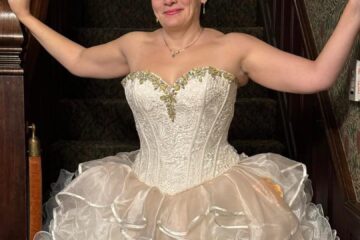Well, I did it! I wrote 50 new short story drafts in 42 days. I started strong, zipping out some flashy flash pieces, and I slogged and hit writer’s block and I did sorta take four days out to revise a novel because that’s the kind of crazy I am.
Only 3 stories were started and not finished. Three stories were submitted to markets on first drafts like that because I am HELLA COCKY mid write-a-thon. This is a change from previous write-a-thons, perhaps a sign of my growing confidence. In my first write-a-thon I abandoned many starts, only saving completed stories to my “write-a-thon” directory. This time I went ahead and saved all files.
My goal, aside from production, was to explore point of view, and I tried to write stories in different points of view, and to re-write stories changing point of view characters. It didn’t take long to realize that the right POV character makes a story better and the wrong POV character is a painful slog of trying to bend the plot around them so the right bits come into view.
An unexpected takeaway I got was that there are basic STORY SHAPES. And choosing a story shape to start with was more important than choosing a quirky idea or even a main character. If I sat down thinking, “This will be an epistolary love story with a break up and reconciliation” well, that was so much easier to start and finish than if I sat down with. “What if AIs had relationships? And, like, what if they broke up?”
I tried to make a list of shapes. They’re… not all that well defined in my head. Here are some:
Three acts – Problem. History. Resolution.
Tinkerer – Problem. Attempt to resolve. Attempt to resolve. Succeed.
Love – Meet, held apart, complication, resolve.
Mystery – Problem. Misleading Clue. Misleading Clue. Resolving clue.
Then these plot-shapes can serve different problems: Defeat a monster, confront a fear, form a relationship, make a choice, overcome a bias, forgive someone.
Obviously, the hardest part of meeting my requirement that the stories all be complete drafts was writing endings. It helped to have a shape, to have a path to the ending in mind from the get-go.
My focus on plot-shape got tighter and tighter as I was struggling to complete drafts, but what I spent the most agonizing over was Character. Picking a main character stopped me cold again and again.
All your window dressing, all your fine language or interesting premises mean nothing if the reader isn’t engaged with some personality in the story. I found myself writing more first-person narratives, to try to let the character have the foreground as much as possible. I got exhausted and frustrated trying to come up with new types of main characters.
Then I realized “Hey no one is likely to know you already wrote something with a half-Vietnamese snarky scientist” and I relaxed.
Also I realized that all those exhaustive attempts to diversify were not as necessary as I thought, because what sticks with readers isn’t what a character is but who the character is. I’m throwing darts at maps to make sure I get representation around the world, but a more important question on the first draft is: what does this person care about? What delights her? What makes him cry? WHO are they, inside, and how will that be reflected in their voice?
Maybe it’s okay if I write mostly from my own bizarre niche of the world, the intellectual working class of the midwest clutching their library borrowed copies of The New Yorker and a generic beer. Everyone is from a bizarre niche. Everyone feels they don’t fit in with where they are and who the world outside thinks they are and that’s okay, because if you describe your character’s feelings honestly enough, they will resonate with someone.
Eh, at least I hope. Other than that I have 50 crappy first drafts to start revising.


